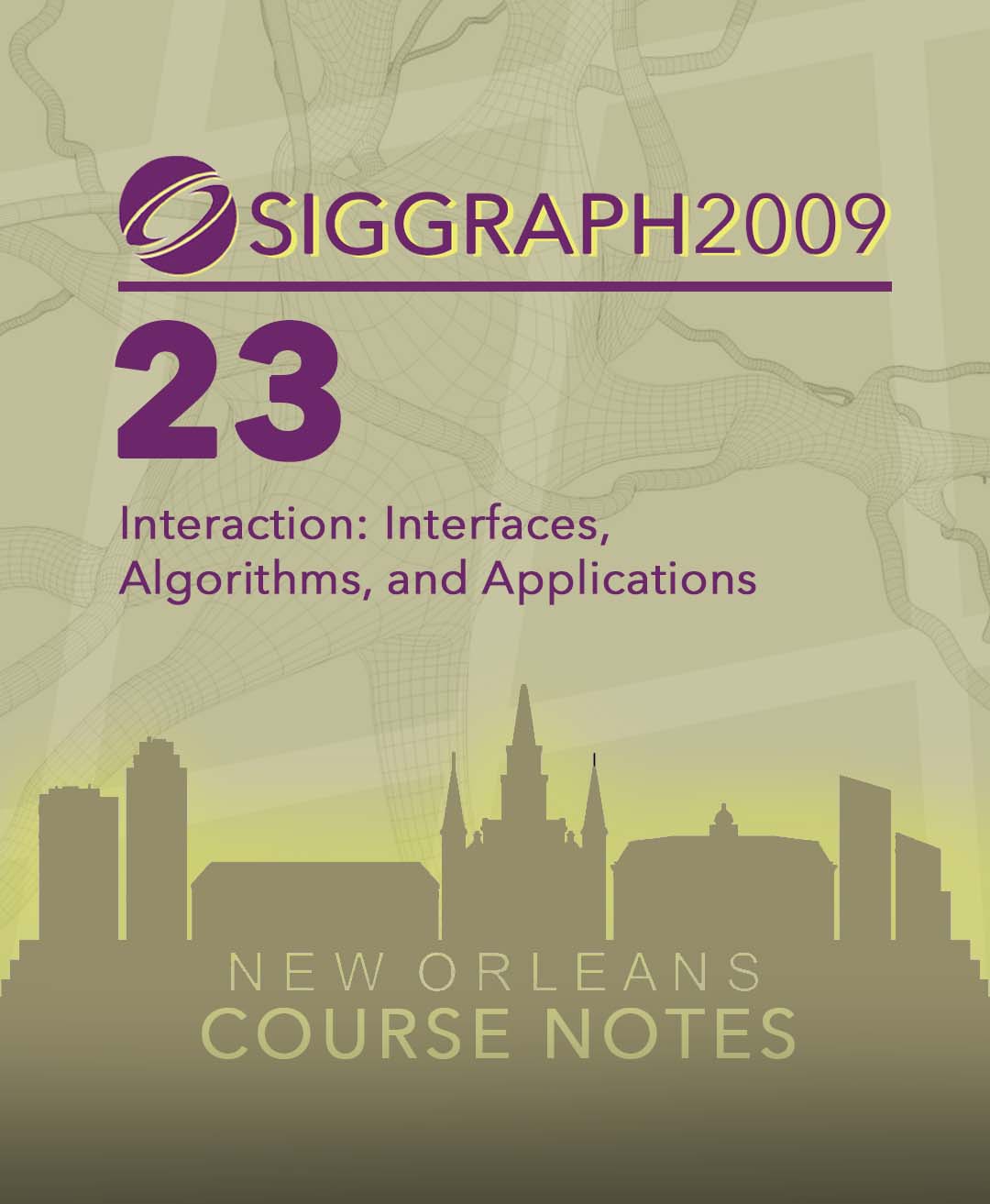“Interaction: Interfaces, Algorithms, and Applications” by Otaduy, Igarashi and LaViola
Conference:
Type(s):
Entry Number: 23
Title:
- Interaction: Interfaces, Algorithms, and Applications
Course Organizer(s):
Presenter(s)/Author(s):
Abstract:
- User interfaces and interaction techniques.
- Applications involving 3D interaction and sketching.
- Tactile interaction with virtual environments.
Description
The field of virtual reality has recently seen the advent of novel commodity 3D user interfaces that have led to not only a revolution in video game interaction, but also new possibilities for other virtual reality applications. This course provides background on the interfaces and algorithms involved in 3D interaction, and also gives an outlook into the research in the field.
The course will cover interaction algorithms, their application to animation, interactive manipulation, video games, and sketch-based interfaces. The course will also pay special attention to interfaces and to tactile interaction techniques. It is intended to programmers and researchers in computer graphics working on interactive applications, such as modeling, virtual reality, video games, etc., interested in particular on intuitive interaction techniques.
The course will be divided into three large areas:
The first part of the course will cover input and output technologies that make 3D interaction possible. The field is well covered in research nowadays, but the progress in interaction technology makes designing effective 3D interfaces an evolving skill. The first part will also pick video games as a particular application case, and describe the use of 3D user interfaces in that context.
The second part will cover the use of sketch-based interfaces in a large number of applications in computer graphics. It will demonstrate how 3D interaction techniques have been successfully applied to, e.g., 3D shape modeling, animation, or special purpose editors.
The third and final part of the course will reflect the importance of tactile interaction on user interfaces. They provide important features such as situation awareness and the ability to perform detailed manipulations. Effective tactile interaction requires basic knowledge of psychophysics aspects, control theory, and physically-based simulation, which are overviewed in the course.




